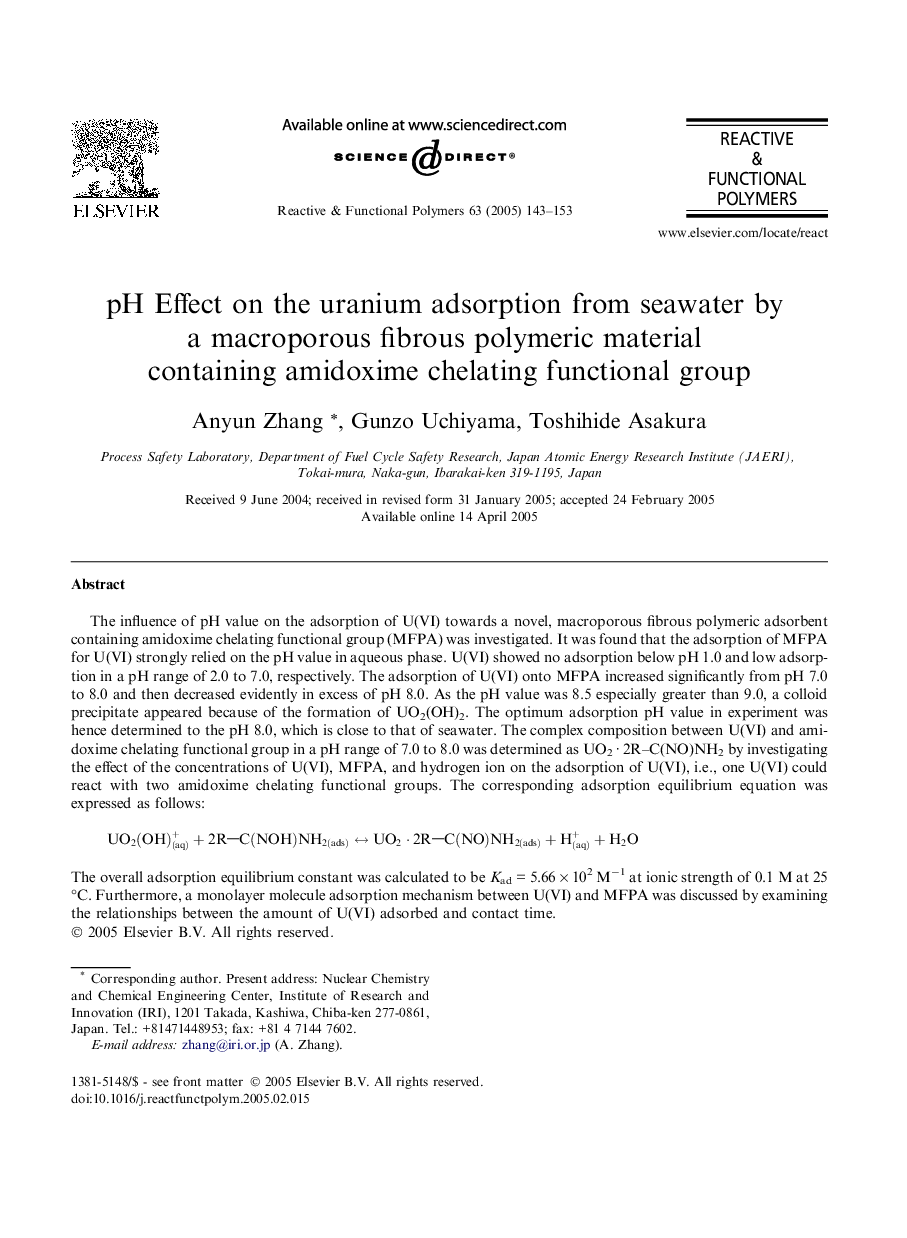| Article ID | Journal | Published Year | Pages | File Type |
|---|---|---|---|---|
| 9562575 | Reactive and Functional Polymers | 2005 | 11 Pages |
Abstract
The influence of pH value on the adsorption of U(VI) towards a novel, macroporous fibrous polymeric adsorbent containing amidoxime chelating functional group (MFPA) was investigated. It was found that the adsorption of MFPA for U(VI) strongly relied on the pH value in aqueous phase. U(VI) showed no adsorption below pH 1.0 and low adsorption in a pH range of 2.0 to 7.0, respectively. The adsorption of U(VI) onto MFPA increased significantly from pH 7.0 to 8.0 and then decreased evidently in excess of pH 8.0. As the pH value was 8.5 especially greater than 9.0, a colloid precipitate appeared because of the formation of UO2(OH)2. The optimum adsorption pH value in experiment was hence determined to the pH 8.0, which is close to that of seawater. The complex composition between U(VI) and amidoxime chelating functional group in a pH range of 7.0 to 8.0 was determined as UO2 · 2R-C(NO)NH2 by investigating the effect of the concentrations of U(VI), MFPA, and hydrogen ion on the adsorption of U(VI), i.e., one U(VI) could react with two amidoxime chelating functional groups. The corresponding adsorption equilibrium equation was expressed as follows:UO2(OH)(aq)++2RC(NOH)NH2(ads)âUO2·2RC(NO)NH2(ads)+H(aq)++H2OThe overall adsorption equilibrium constant was calculated to be Kad = 5.66 Ã 102 Mâ1 at ionic strength of 0.1 M at 25 °C. Furthermore, a monolayer molecule adsorption mechanism between U(VI) and MFPA was discussed by examining the relationships between the amount of U(VI) adsorbed and contact time.
Keywords
Related Topics
Physical Sciences and Engineering
Chemistry
Organic Chemistry
Authors
Anyun Zhang, Gunzo Uchiyama, Toshihide Asakura,
